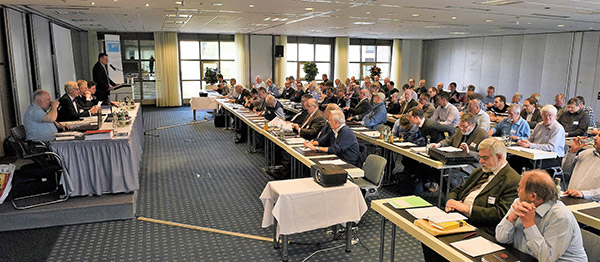Expertising standards
of the Bund Philatelistischer Prüfer e.V. (BPP)

1. Basis for expertising
The findings of an expertiser in regard to a philatelic item under examination cannot usually be done with absolute certainty, but with a high degree of probability.
There is no generally applicable procedure for the examination of philatelic items. If necessary, the expertiser must apply various methods to achieve a true expertising decision.
The examination is carried out on the basis of knowledge available at the time of the examination and the reference collection available.
The presence of original reference material in sufficient quantities (such as for postage stamps, colours, types, gums and cancellations) in the constant ownership or custody of the expertiser is a requirement for each examination. Also, collections of data such as a record of the better and more forgery-vulnerable items in the expertising area, copies of the expertiser’s own attestations, auction catalogues, postmark illustrations and literature are required.
The results of research by philatelic authors and study groups, as well as the postal history and contemporary background to the expertising area are taken into account.
Quality assessments relate to the condition of the item expertised. They are based on subjective assessment by the respective expertiser. Uniform quality standards are not possible, in a generalised way for all areas of expertising, but within a reasonable framework for an expertising area.
2. Establishment of the authenticity and classification of the item being expertised
Examination of the stamp and any overprints at various magnifications, using original material for comparison.
Comparison of the expertised item, in regard to the paper, colour and perforation or the way it was cut with original stamps and the known forgeries.
Examination of the gum including gum ribbing, in obliquely incident light and / or UV light in direct comparison with genuine examples, under magnification if necessary. With perforated or rouletted stamps the perforation, on any substrate.
Examination and classification of the watermark, colour, type and perforation.
With covers, apart from the stamps and postmarks, the authenticity of the inscription, any added labels and postal endorsements, the correctness of the franking as well as postal history features are to be investigated.
With pieces and covers, the original position of the stamp is to be checked.
3. Expertisation and evaluation
Comparison with an original postmark impression (colour and size) under different magnifications. Concurrence test of the postmark at sufficient magnification.
Assessment of the fine structure of the stamp to detect minute detail using a binocular microscope, with particular regard to forged postmarks which have been manufactured using cliché dies, or by photocopying or scanning.
Comparison of the postmark with the known forgeries.
Establishing the usage of the postmark during the validity of the postage stamps, with consideration as to any improper use (backdatings).
4. Establishing the condition of the item being expertised
Assessment of the condition using sufficient magnification.
Studying at high magnification, to detect any tampering or repairs (such as repainting, use of non-original additions, separation and rejoining of different upper and lower portions).
Detection of repairs, using substances which do not affect the expertised item such as benzine or water.
Examination using various light sources (such as UV light) using incident light, translucence or side-lighting.
Checking the condition of the surface to detect any cleaning.
5. Technical equipment
Reproducible light sources such as a daylight lamp, cold light lamp.
Quality magnifying glass with 3x to 15x magnification.
Binocular microscope with from 7x to at least 20 x magnification with high quality optics and a large field of vision.
UV lamp of 366 nm wavelength and a capacity of at least 100 watts, for phosphorescence test 256 nm wavelength.
Perforation gauge, watermark detector, paper thickness gauge with a minimum usable area 3 mm. in diameter.
Optional photocopier, video or digital camera, scanner, computer.
6. Requirement for economy in expertising
The expertiser evaluates the item being expertised in accordance with points 1 to 5. Thus, methods of examination are excluded which are usually not available to the expertiser or which involve expenditure that goes far beyond the usual amount and cannot be covered by the expertiser’s fee. These include such inspection methods as can be performed only in a few technical institutes (e.g. isotope procedures, C-14 dating, X-ray fluorescence and other complex physical and chemical methods).
In the application of the principles described under 1 to 5 above there is a requirement for economy, that is, the work necessary for the examination and the applicable expertising methods needs to have regard to the value of the expertised item and must be in proportion to the expertising fee and the value of the item expertised.